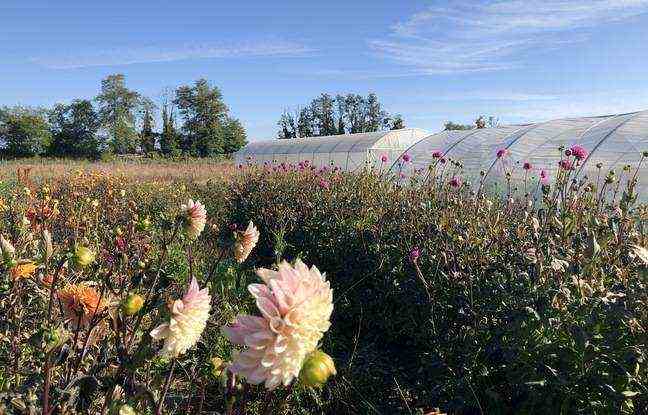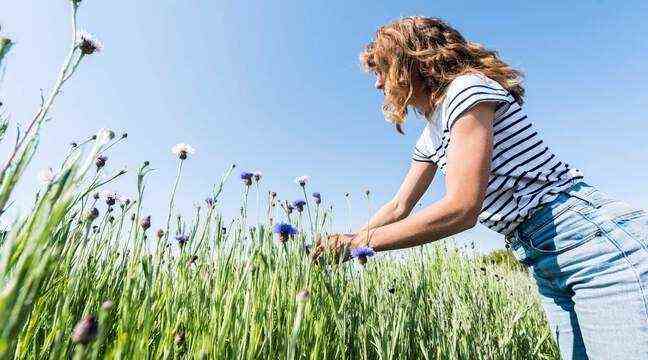“We pull up everything, we put back compost, woven canvas and we plant”, explains Gabrielle Grault in the middle of autumn work on her small flower farm “Fleurs d’Aquitaine” in Génissac, in Gironde. Installed 18 months ago after a career in the tourist sector, this 28-year-old young woman does not regret for a moment her professional reconversion. She already had several experiences in market gardening and a furious desire to put her hands in the earth.
Her meeting with flower growers was the trigger that prompted her to get started. She is now renting a plot from the town hall of Génissac to test her activity. On the five hectares in total of communal land, there are also shared gardens and market gardening. Everything is in organic farming certified Ecocert.
A highly industrialized sector
“Nine out of ten flowers in the store come from Ecuador, Colombia or Kenya,” explains the floriculturalist. They pass through the Netherlands, a country which has become a key player in floriculture in the world. The carbon footprint is disastrous, with transport by refrigerated planes: the flower industry is not at all beautiful ”. She adds that certain pesticides, banned in France, are even used by producing countries and constitute a risk for those who cultivate them but also for the customers who handle them.
The tradition of red roses for Valentine’s Day is part of this industrial logic, disconnected from the seasonality of flowers. “This is not the rose season at all, which runs from June to October,” she laments. The red rose that comes from Ecuador on Valentine’s Day is an ecological disaster. “At this time, it is more suitable to offer anemones or buttercups, for example, which” can make beautiful bouquets “, she promises. Valentine’s Day but also Mother’s Day and All Saints’ Day are peaks of activity for the florists she supplies and she tries to respond to them with seasonal varieties.
Seasonal flowers in the open field
The majority of its flowers are grown in the open field and therefore more exposed to bad weather than those in greenhouses: a gust of wind can bend the stems and rain can damage the petals. “A flower that is not standard can be interesting for florists who work differently and do not want a standard flower that is straight,” argues Gabrielle Grault. In spring, the flowered plot also has the advantage of attracting a number of pollinators. “It is a reservoir of biodiversity in a department marked by vineyards,” she explains.

She nevertheless installed two greenhouses for the most fragile flowers. “The anemones for example, it is so that they arrive a few weeks earlier, first, as for the vegetables”, she explains. These flowers will then be offered to the network of around fifteen florists with whom she works.
In the fall, you can discover the well-stocked rows of chrysanthemums, Japanese anemones, dahlias, echinacea, etc. In total, the young woman cultivates around fifty varieties over the year. From November to January, there will be no more flowers but afterwards will bloom anemones, ranunculus, daffodils, tulips, before the other spring flowers.
In a year, the farm will have to leave the plot leased on a provisional basis. Its creator will join forces with another floriculturalist based in Blanquefort and together they are looking for a land of between 5,000 m² and one hectare in Gironde. “We need to have access to water and electricity and we need to be able to install greenhouses,” points out the young woman who has no doubt that the demand for local flowers will flourish more. in addition.

